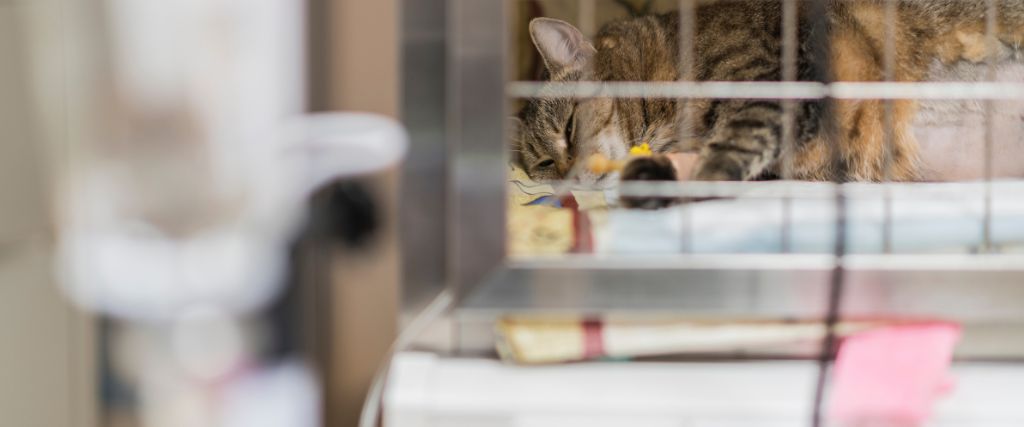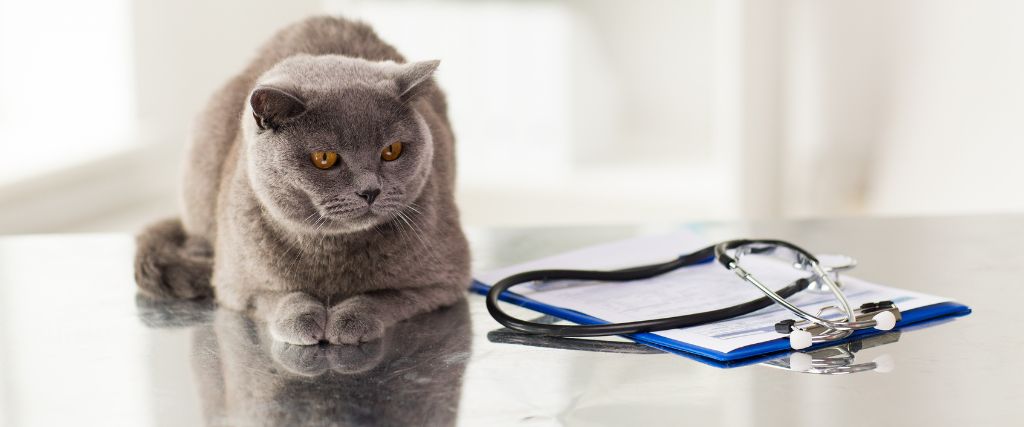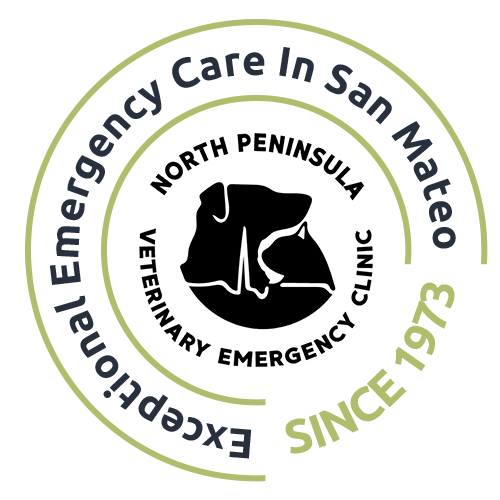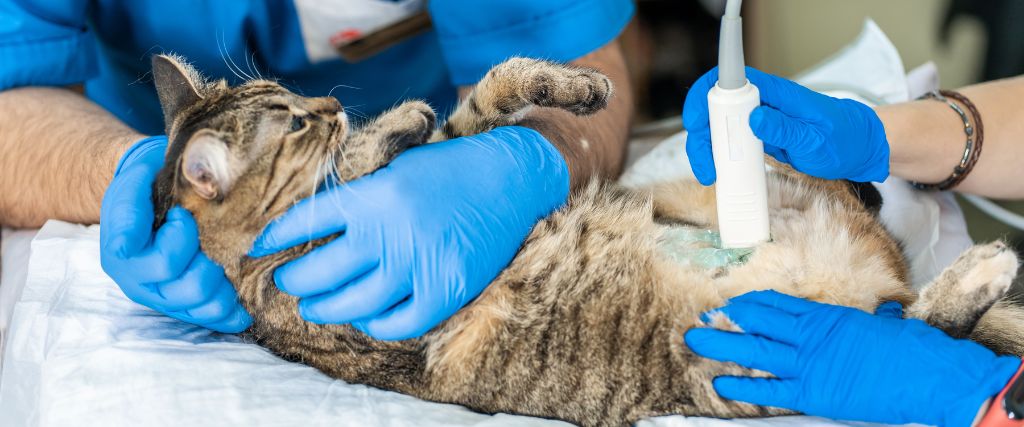Navigating the maze of feline health issues can feel like a daunting task, but thankfully, modern veterinary medicine has given us incredible tools to help us along the way. Veterinary Diagnostic Imaging—whether it is radiographs (x-rays), ultrasounds, or even more advanced technologies—is a game-changer when it comes to understanding what is going on inside your feline friend. It is like having a window into their well-being, offering clues that are invisible to the naked eye. Each of these non-invasive tools has a different purpose and provides important information on your kitty’s health so your veterinarian can make informed recommendations for treatment.
When Do You Use Cat Diagnostic Imaging?
There are many conditions where diagnostic imaging can help your cat. These range from the acute (such as ingestion of a foreign substance or a fracture) to the chronic (such as a heart condition). For example, imagine your cat is vomiting or having trouble breathing. An radiographs (x-rays) will show if your cat may have swallowed something unusual that could impact their breathing or digestion. In other cases, your cat might have a heart problem and an ultrasound could give more information so your veterinarian will be able to make a proper diagnosis.
The Four Types of Veterinary Diagnostic Imaging Are:
Radiographs (X-rays)
You are probably familiar with radiographs (x-rays) from your own healthcare. You know that a focused beam (which you cannot see) takes internal images of your body so your healthcare professional can check for certain abnormalities of your body. Veterinarians use radiographs the same way to diagnose certain problems in your cat. Radiographs (x-rays) are often the first diagnostic tool used because they give an overview of a presenting problem and help your veterinarian proceed to identify the source of your pet's illness.
According to VCA Animal Hospitals, “In the abdomen, many organs can be distinguished and foreign bodies or air trapped within the intestines may often be easily observed. The size and shape of the liver, kidneys, and spleen are often assessed on radiographs.”
Ultrasounds
Ultrasounds are often a useful complement to radiographs.“An ultrasound is a non-invasive procedure used to evaluate the internal organs. Ultrasound examinations can be used to examine the abdominal organs, heart, eyes and reproductive organs in cats. For many abdominal disorders, both ultrasound and radiographs are recommended for optimal evaluation. The radiograph shows the size, shape, and position of the abdominal contents, and the ultrasound allows the veterinarian to see inside the organs." (Source: PetPlace)
During an ultrasound, a medical professional will use a probe on a specific area of your cat. The probe sends sound waves into your cat, and the resulting echoes create images of your pet's internal organs.

MRI (Magnetic Resonance Imaging)
MRI machines are relatively rare in the veterinary world because they are expensive and require trained professionals. An MRI performed on a pet also requires that they be sedated or under full general anesthesia. However, in certain contexts, MRIs highly useful, especially when for neurological concerns.Tufts University School of Veterinary Medicine in Grafton Massachusetts currently uses MRI for diseases that affect the brain and spine. "These diseases, known as neurological diseases, show a wide array of symptoms and in many cases can be life-threatening. Some symptoms that may prompt your veterinarian to recommend an MRI include seizures, circling, depression and behavioral changes such as aggression. Staggering, paralysis of one or several limbs and spinal pain may also be present."
Cat MRI’s work like human MRI’s. Your cat will need to remain still within a circular structure while pulses of radio waves continuously reverberate off the area in question, allowing your medical professional to see areas of possible fluid or inflammation. For your feline's safety, they will be sedated or anesthetized for an MRI.
CT Scans
"While it’s similar to a traditional radiograph, a computed tomography scan obtains images of slices of a patient, meaning they can go very small and later the slices are reconstruct into three-dimensional models of the affected area, according to Dr. Wilfried Mai, an associate professor of veterinary radiology at the University of Pennsylvania School of Veterinary Medicine...This provides excellent detail of the internal anatomy and much more information than a simple radiograph" (Source: PetMD)
Is Diagnostic Imaging Safe for My Cat?
Once again, just as in human medicine, diagnostic imaging is safe for our cats when used correctly. It is important for your veterinary team to evaluate your cat’s health prior to recommending diagnostic tools. As medical professionals, they want what is best for your cat, and diagnostic tools will help them make an improved diagnosis.

As an example of how certain diagnostic imaging tools can help, according to The Drake Center, "The goal of feline radiographs is to ascertain a diagnosis or obtain a final answer without having to perform further more invasive tests or procedures. For example, an X-ray might show evidence of a tumor of the spine and possibly involve the surrounding muscle. The addition of an MRI would reveal the specific tumor and the extent to which the tumor extends into the surrounding muscle tissue. This type of information is very important for a prognosis and treatment plan."
The Wrap Up
The success of these diagnostic methods is not just about the technology itself; it is about how it is used. Conducting these tests with care, precision, and the expert touch of a qualified veterinarian is critical for accurate results. This means ensuring that your pet is comfortable and still, taking images from multiple angles when needed, and interpreting those images with the utmost expertise. When done correctly, diagnostic imaging can provide invaluable information, enabling early intervention and more effective treatment plans.
So, the next time your veterinary professional suggests having an image taken of your cat, you can breathe a sigh of relief knowing that you are taking a significant step toward maintaining their health and happiness. After all, our pets depend on us to understand them inside and out, and diagnostic imaging helps us do just that. Cheers to many more years of purrs and cuddles!

